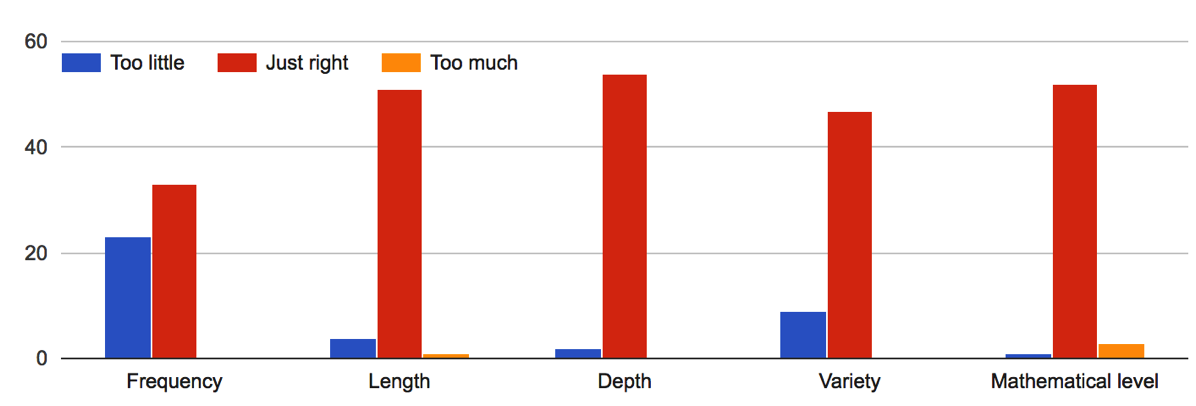The word “mathematics” comes from the Greek μάθημα (máthema) meaning lesson and the verb μαθαίνω (mathéno) meaning “to learn”. It could be argued that math anxiety is anxiety about learning in general but that’s probably stretching things a bit. Although math is often perceived as the subject of proofs and absolute truth, there are lots of math myths and math legends. Perhaps enough for a dedicated blog.
Many of the legends have become part of history, others are history in the making. Pappus (“old man”) of Alexandria is the nameless giant and last of the ancient geometricians. Charles Babbage was the last of the Industrial Revolution mathematics machine-makers. Who, after watching “A beautiful mind” will ever forget the story of John Forbes Nash, Jr. battling his paranoid schizophrenia, not with pills but with logic and his winning a Nobel prize in Economic Science? And then there are the truly monumental life sagas of the largely unknown: Srinivasa Ramanujan, Jakow Trachtenberg, Andrew Wiles and Grigori Perelman.
A young, self-taught Ramanujan, set sail for England in a merchant ship in 1914 just before the outbreak of WWI and became the first Indian to be elected a Fellow of Trinity College, Cambridge just before the war’s end in 1918. Trachtenberg, imprisoned for 7 years in Nazi concentration camps, without pen or paper, worked mentally and developed speed arithmetic. The mathematics professor Wiles kept a 7 year-secret, working in recluse day and night and finally proved the 17th Century Fermat’s Last Theorem in 1994. Perhaps most mysterious of them all is Perelman, the Russian genius who posted a series of eprints to the free arXiv server in 2002, that proved the 1904 Poincaré Conjecture. He continues to live in poverty refusing the $1,000,000 Clay Millenium Prize awarded to him. Each of their stories is so impressive that each one should be made into a movie. Then there are the legends we ourselves create. We all have our personal heroes and heroines. Each of them a true legend.
And then there are the math myths. We are surrounded by many inspiring minds but the myths seem to linger on. Many have tried to dispel them. Perhaps no one more that Paul Halmos, a Hungarian-born American mathematician. At the University of Connecticut’s Gallery of Mathematicians, his portrait shares a wall with other great wizards such as Archimedes, Descartes, Euclid, Galileo and Newton. Not bad, at all. But I can hear you saying, “who the hell was he”? Heard of Q.E.D. (“quod erat demonstrandum”)? It’s what mathematicians write at the end of proof. The more common end-of-proof mark is “∎” which is Unicode symbol U+220E also known as “the Halmos”. He made fundamental advances in the areas of probability theory, statistics, Hilbert spaces and algebraic structure of mathematics and won medals for his ability to communicate mathematics. His “I Want to Be a Mathematician: An Automathography” is well worth a read.
Five of the most common math myths are:
- The Genius Myth (that good mathematicians are born with special math talent and enormous left brains);
- The Good Memory Myth (that good mathematicians have a phenomenal memory for formulas);
- The Using-Tools-Is-Cheating Myth (that good mathematicians don’t use fingers, toes and calculators);
- The Gender Myth (that good mathematicians are all men despite the abundance of female bio-statisticians);
- The Who Needs it Anyway Myth (that math is useful only to mathematicians).
But the biggest myth of them all is the “I-Cant-Do-Math Myth”. I recently taught multivariate calculus to a class of non-mathematicians and social scientists. It wasn’t just them asking the question “why are we here”? But an open-mind is a powerful adversary. They soon dusted-off this myth in a matter of months. Yes, for some, math is like sorcery. We all have our superstitions to overcome. The good news is that we can. Arthur C Clarke who once said that, “any sufficiently advanced technology is indistinguishable from magic”. If that technology is born of math then however miraculous or foreboding it appears, we will learn to embrace it. Mathematics – to learn. Let’s face our fears, dispel the myths and advance. There are legends to be made.
Dr Michael Taylor (PhD, CPhys)
National Observatory of Athens &
American University of Athens
https://patternizer.wordpress.com/
Sponsor’s message: Receive free weekly updates about new math books. Don’t miss great new titles in the genres you love (such as Mathematics, Science, Programming, and Sci-Fi): https://anynewbooks.com

I want to know from you whether anyone can just entertain an idea and then produce a mathematical justification of it, thereby stating that it is a valid idea, i.e. that it can exist in objective reality even though it does not in fact exist in objective reality — or even in fact it does exist only we have not discovered it yet.
An example of an idea if I may, cosmologists who are telling mankind that the universe could and did come from nothing, like for examples: Hawking, Stenger, and Krauss.
Hungarian considered math Magyar = man
Think right way
acting?